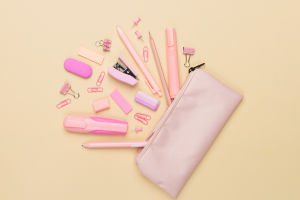When it comes to painting, selecting the right brush size is crucial to achieving the desired effect.
Paint brushes come in a variety of sizes and shapes, each serving a specific purpose.
Understanding how to distinguish these sizes is essential for both beginners and experienced artists. Here's a guide on how to identify and choose the correct paint brush size for your project.
1. Understanding Brush Size Numbers
Paint brushes are usually marked with a number on the handle, indicating their size. The numbering system can vary between manufacturers, but generally, smaller numbers (e.g., 0, 1, 2) indicate smaller brushes, while larger numbers (e.g., 10, 12, 20) correspond to larger brushes.
Smaller Brushes: Sizes 0 to 2 are ideal for fine detail work, such as adding highlights or intricate designs. They are perfect for delicate lines, lettering, and precise touch-ups.
Medium Brushes: Sizes 4 to 8 are versatile and can be used for both detailed work and broader strokes. They work well for filling in smaller areas or applying base layers.
Larger Brushes: Sizes 10 and above are best for covering larger surfaces, creating bold strokes, and adding background elements. They are typically used when a broad application of paint is required.
2. Brush Width and Length
Aside from the numerical size, the width and length of the brush bristles can affect the final stroke. For example, two brushes with the same numerical size might have different bristle lengths, leading to different effects:
Short Bristles: Offer more control and are great for creating detailed and precise strokes. Brushes with shorter bristles are often used in more controlled, realistic painting styles.
Long Bristles: Provide a more fluid stroke, allowing for looser, more expressive painting styles. They are commonly used for washes and background work in watercolor and acrylic painting.
The width of the brush head also plays a role. Wider brushes cover more area, making them suitable for filling in backgrounds or applying washes, while narrower brushes are better for creating lines and details.
3. Brush Shape Matters
In addition to size, the shape of the brush head impacts the kind of strokes you can create. Here are the most common brush shapes and how their size affects usage:
Round Brushes: These are the most versatile, coming in a wide range of sizes. Smaller round brushes (sizes 0-4) are excellent for fine details, while larger ones (sizes 6 and up) can be used for broader strokes.
Flat Brushes: Flat brushes have a square end and are perfect for making bold, sweeping strokes. Smaller flat brushes (sizes 1-4) allow for more controlled lines and edges, while larger sizes (sizes 6 and above) are ideal for painting large areas and creating straight edges.
Filbert Brushes: These have a rounded edge, combining the benefits of round and flat brushes. Smaller sizes work well for detailed blending, while larger filberts can be used for soft, rounded strokes.
Fan Brushes: Fan-shaped brushes are typically used for blending and creating texture, such as foliage or clouds. The size of the fan brush determines how much texture you can create in a single stroke.
4. Practical Tips for Choosing Brush Sizes
Test the Brush: If possible, test the brush before purchasing. A brush that feels comfortable in your hand and responds well to your desired strokes will make your painting process smoother.
Match Brush Size to Canvas Size: A general rule of thumb is to match the brush size to the size of the area you want to paint. For large canvases, use larger brushes for quicker coverage. For smaller, detailed work, opt for smaller brushes.
Experiment: The best way to understand brush sizes is through practice. Experimenting with different sizes and shapes will give you a better feel for how each brush performs.
By recognizing the numbers, shapes, and types of brushes, you can select the right size to bring your artistic vision to life.
Choose The Right Paint Brush For The Perfect Paint Project
Video by BuildersSA


